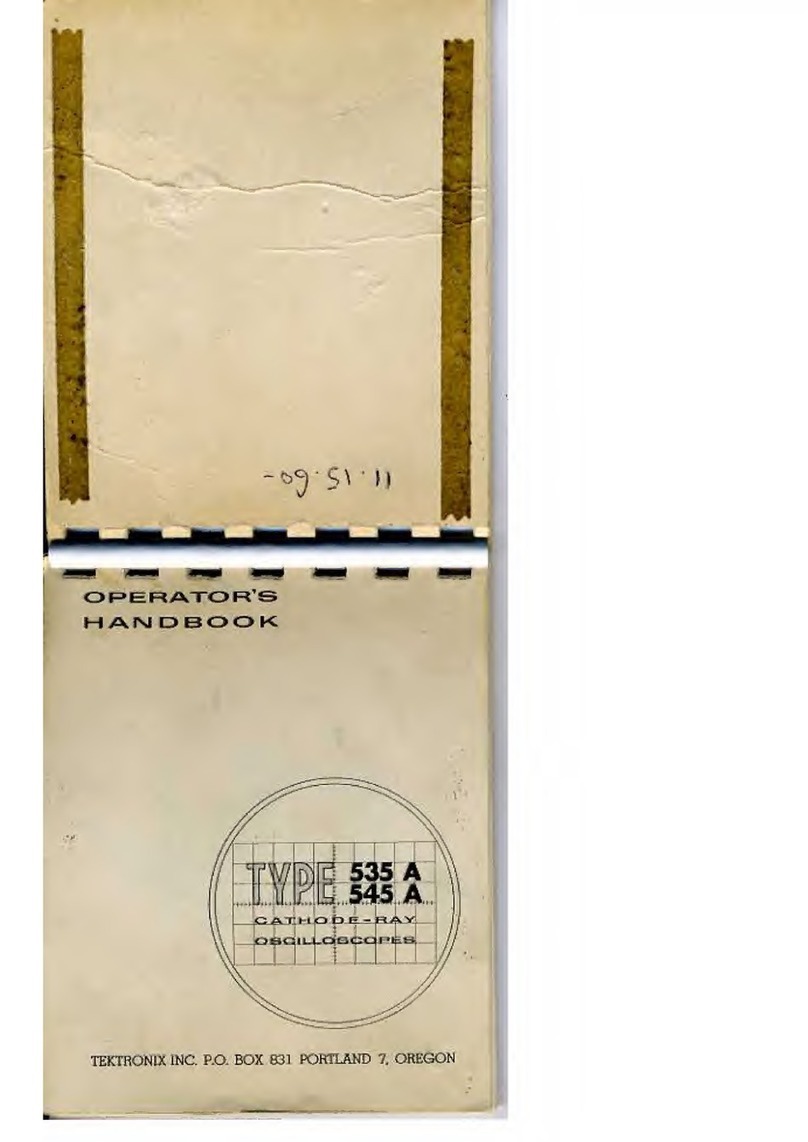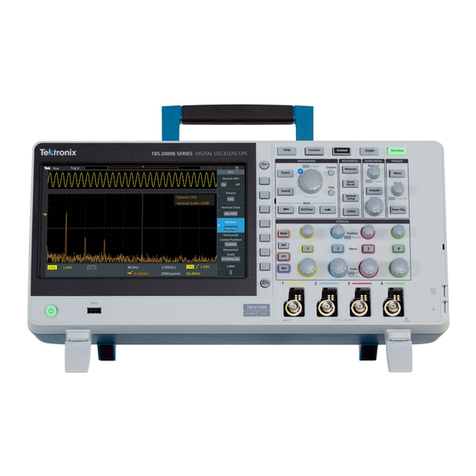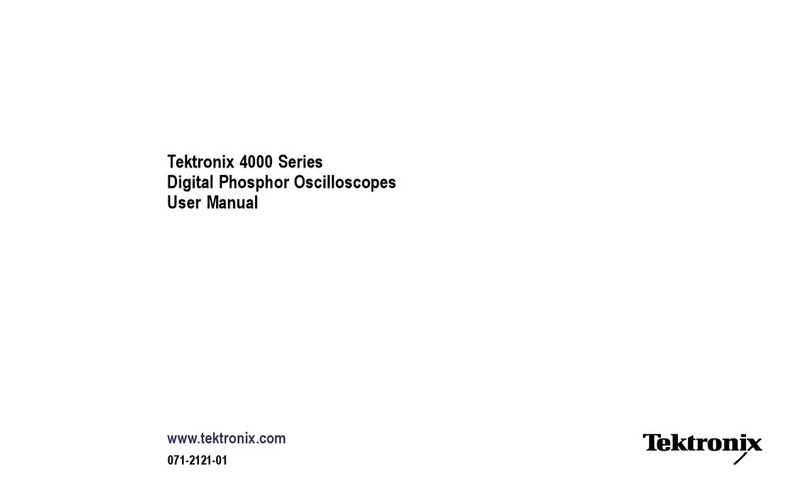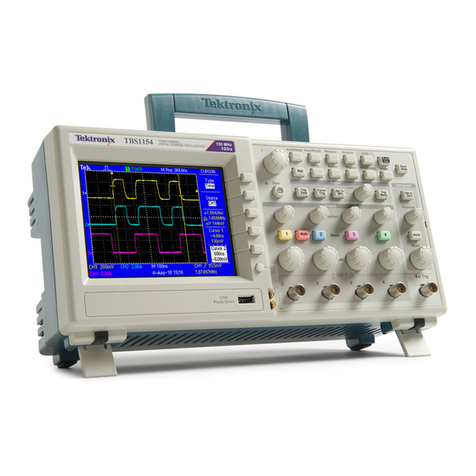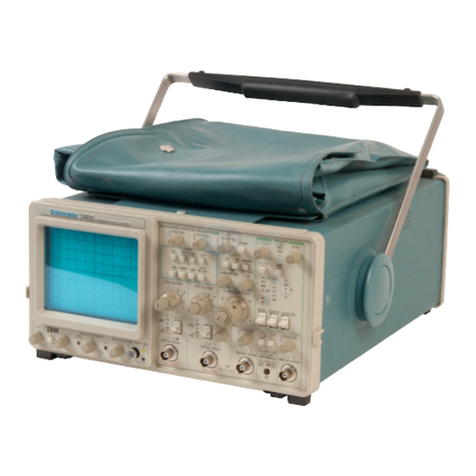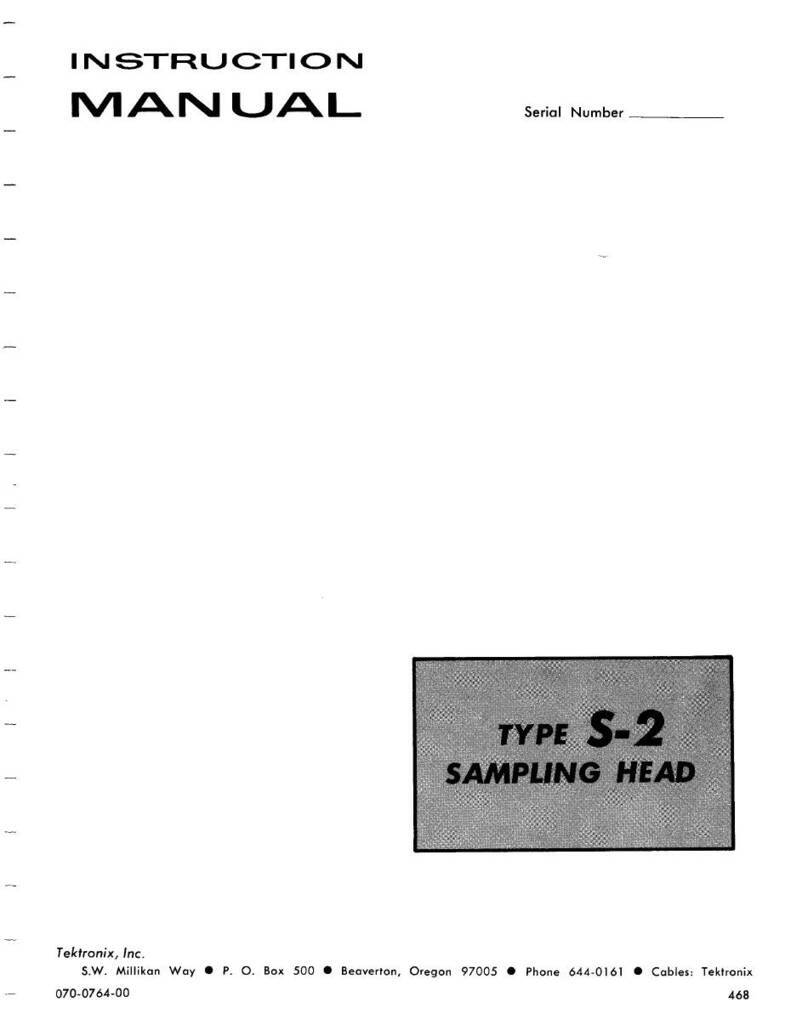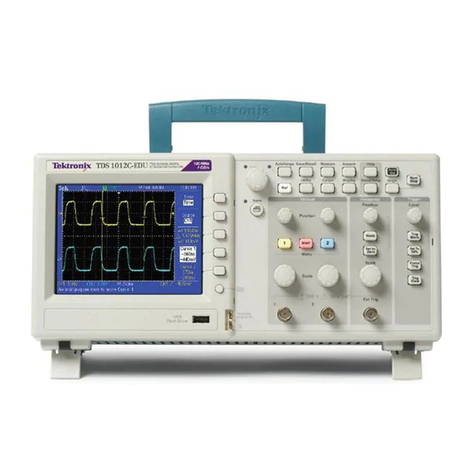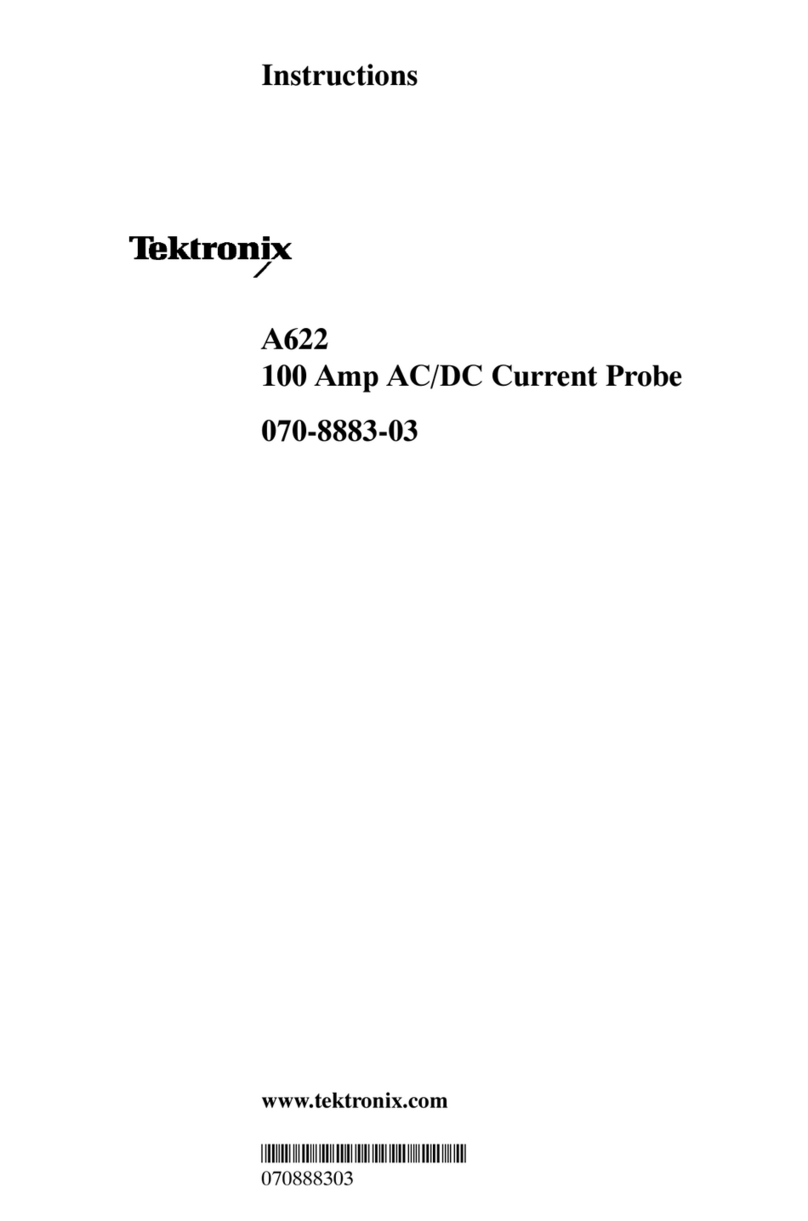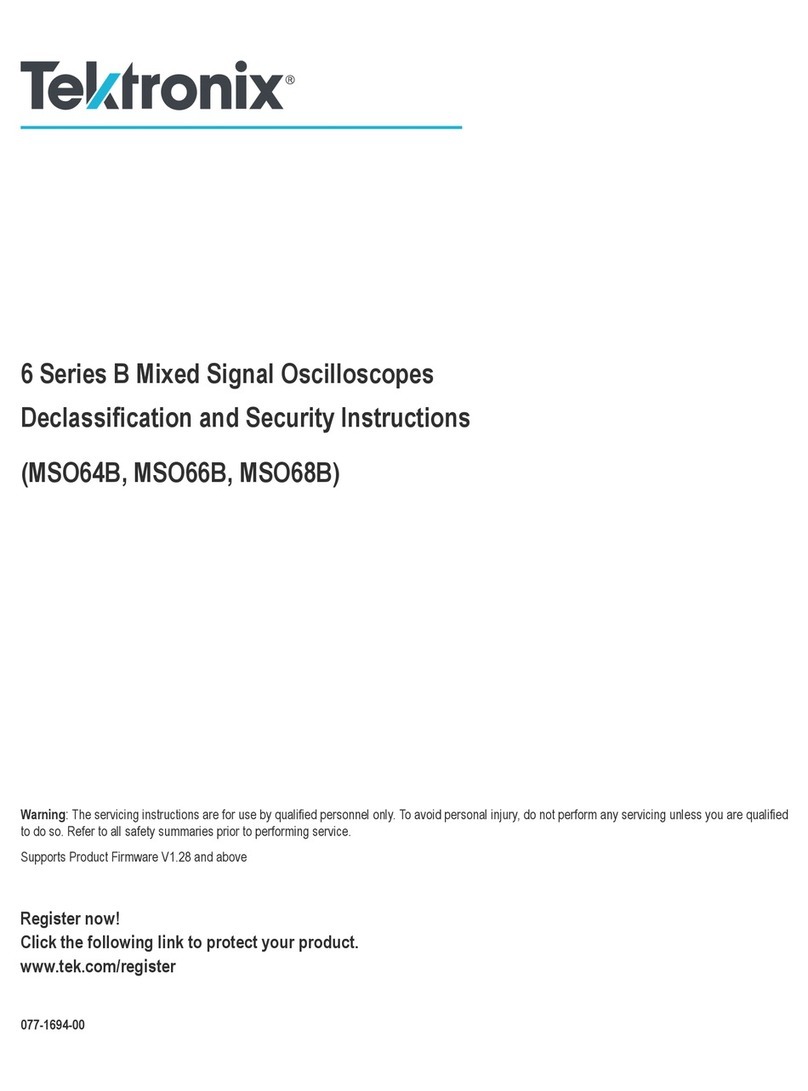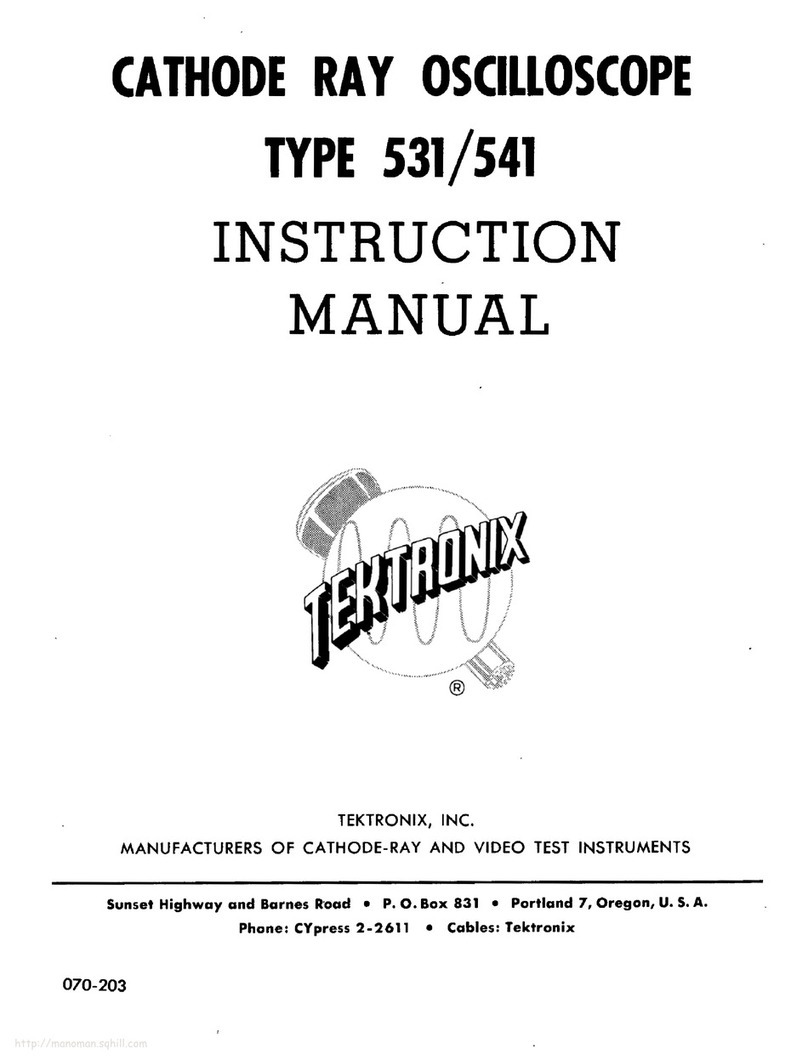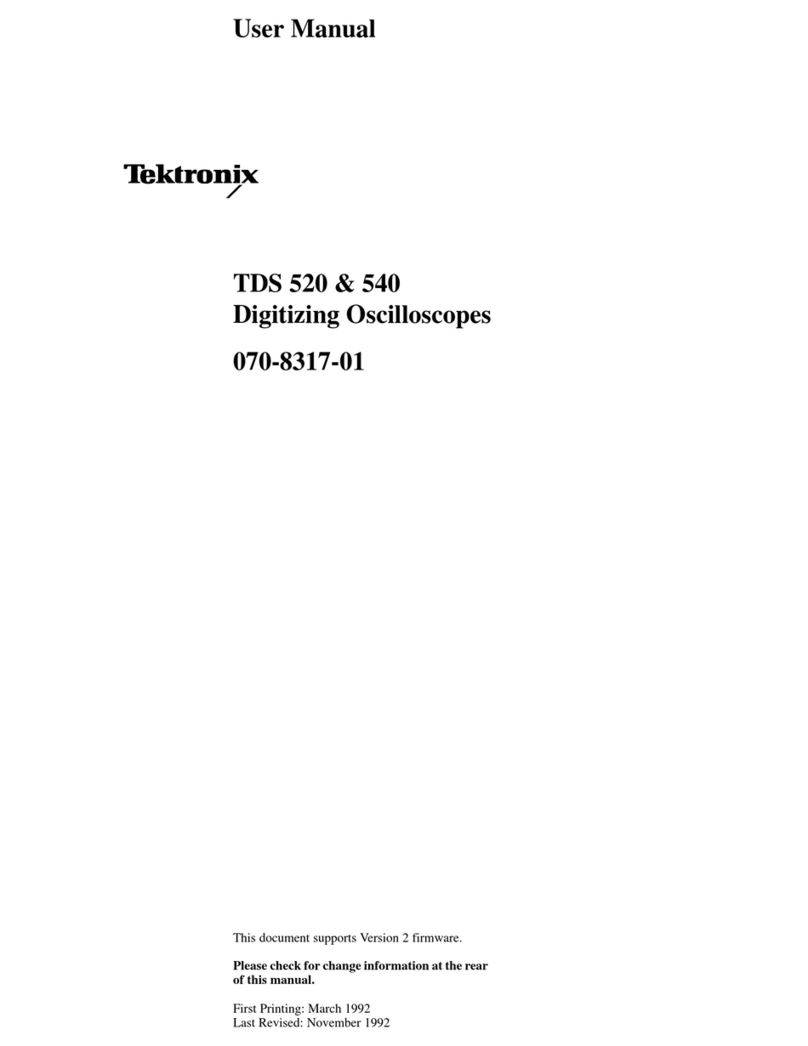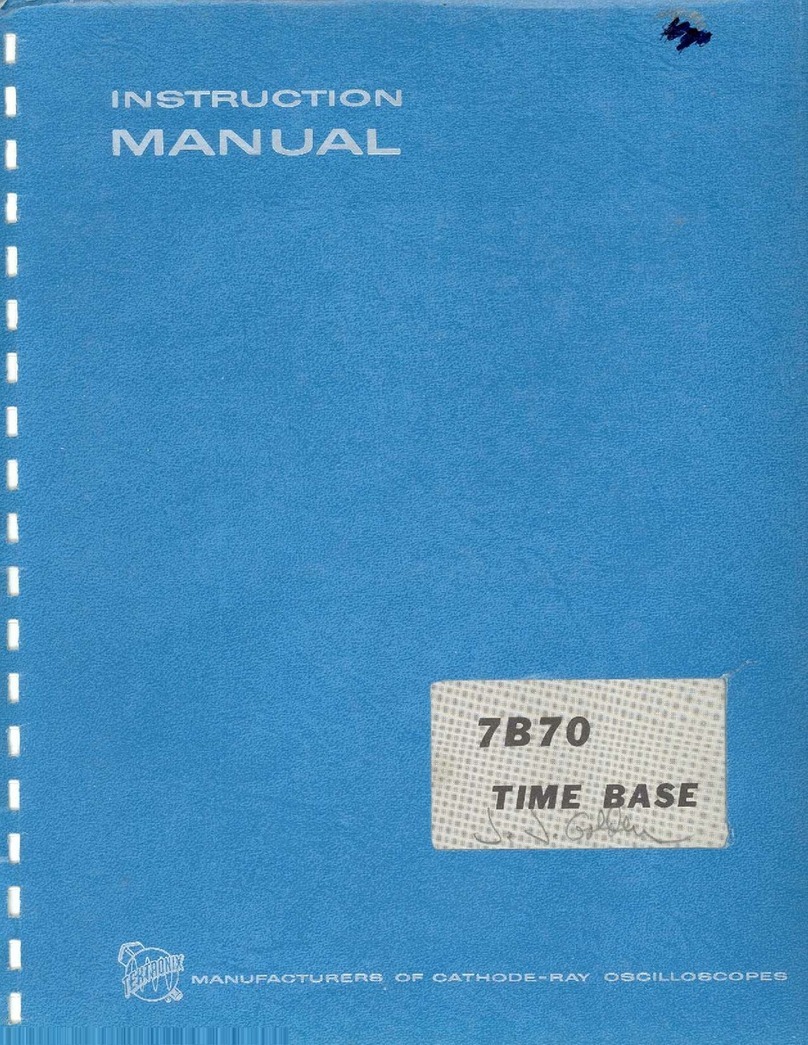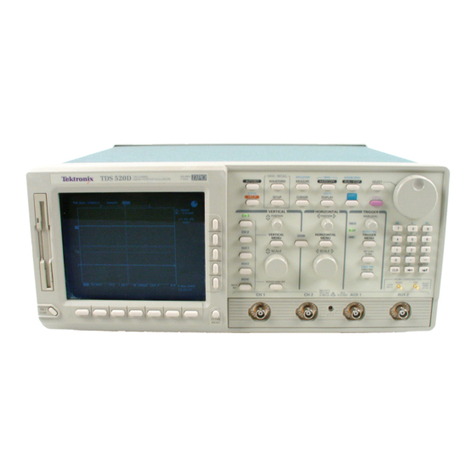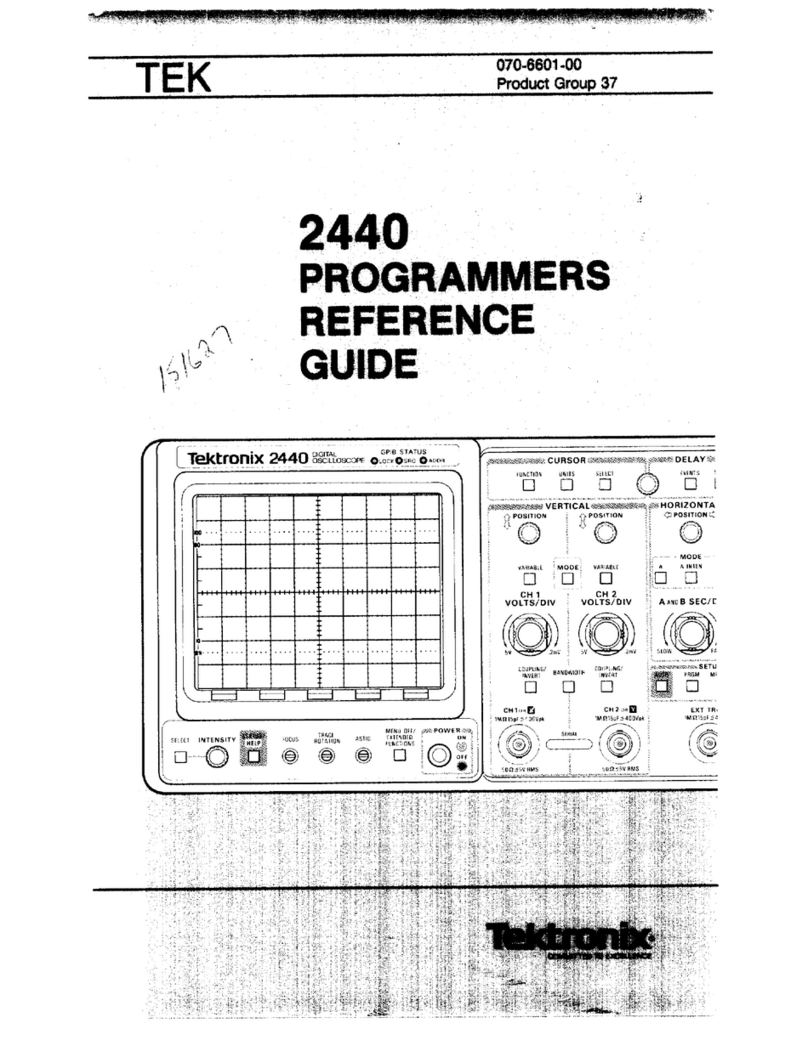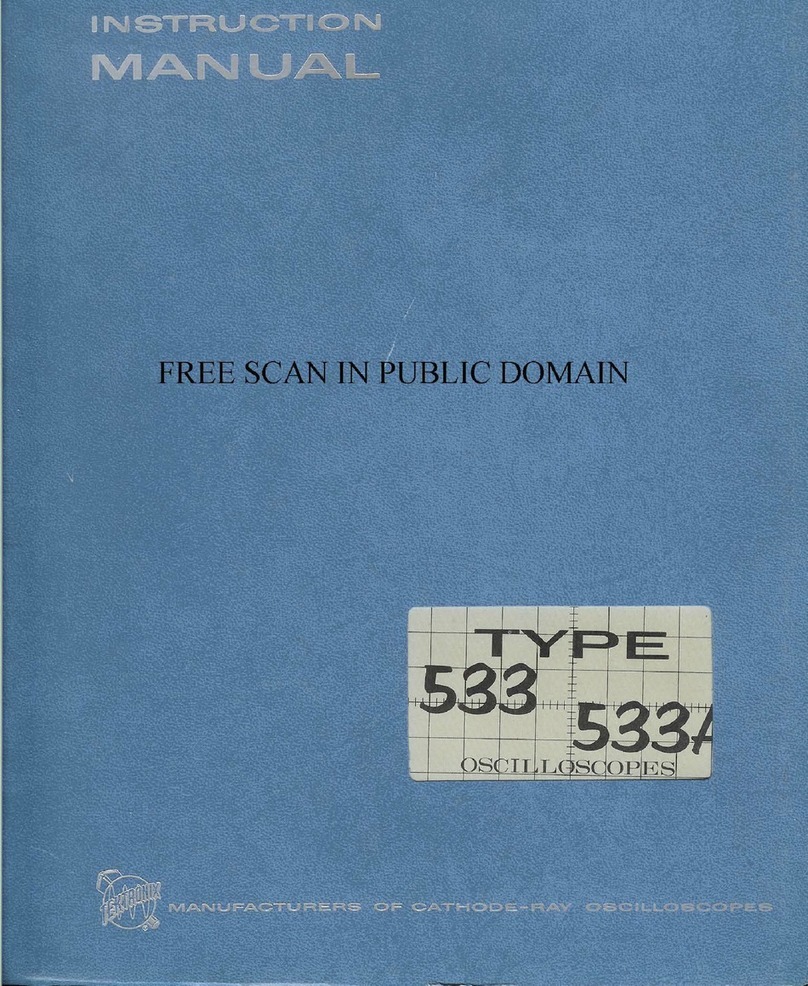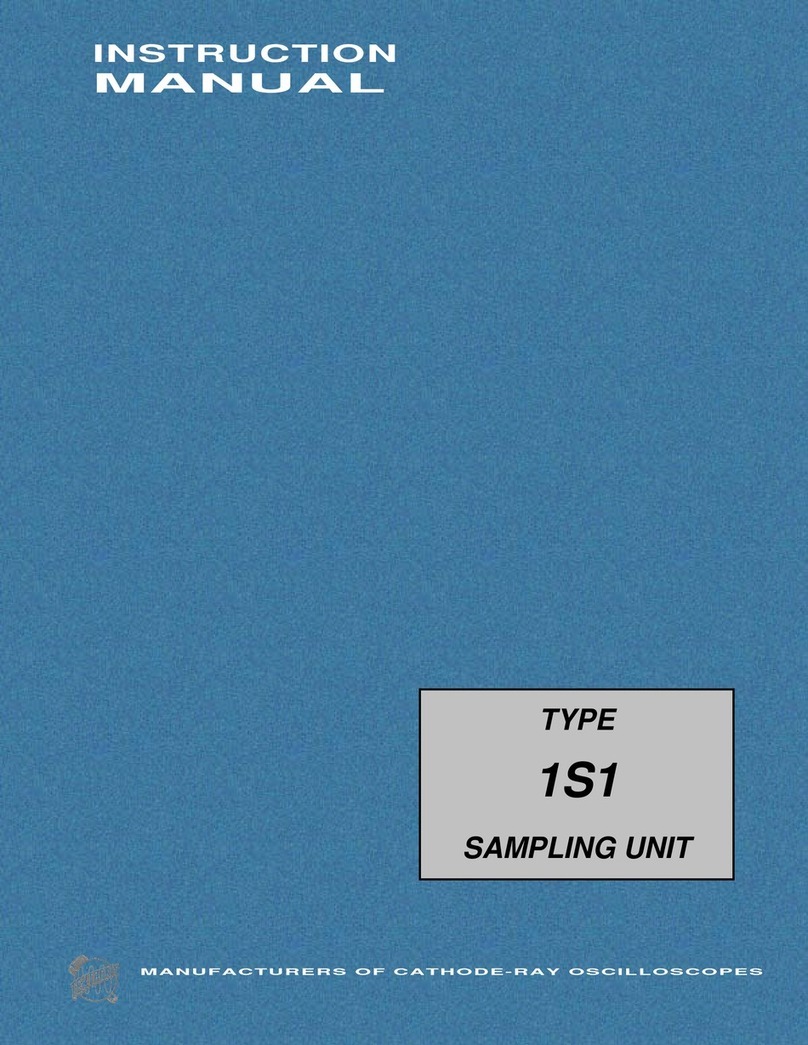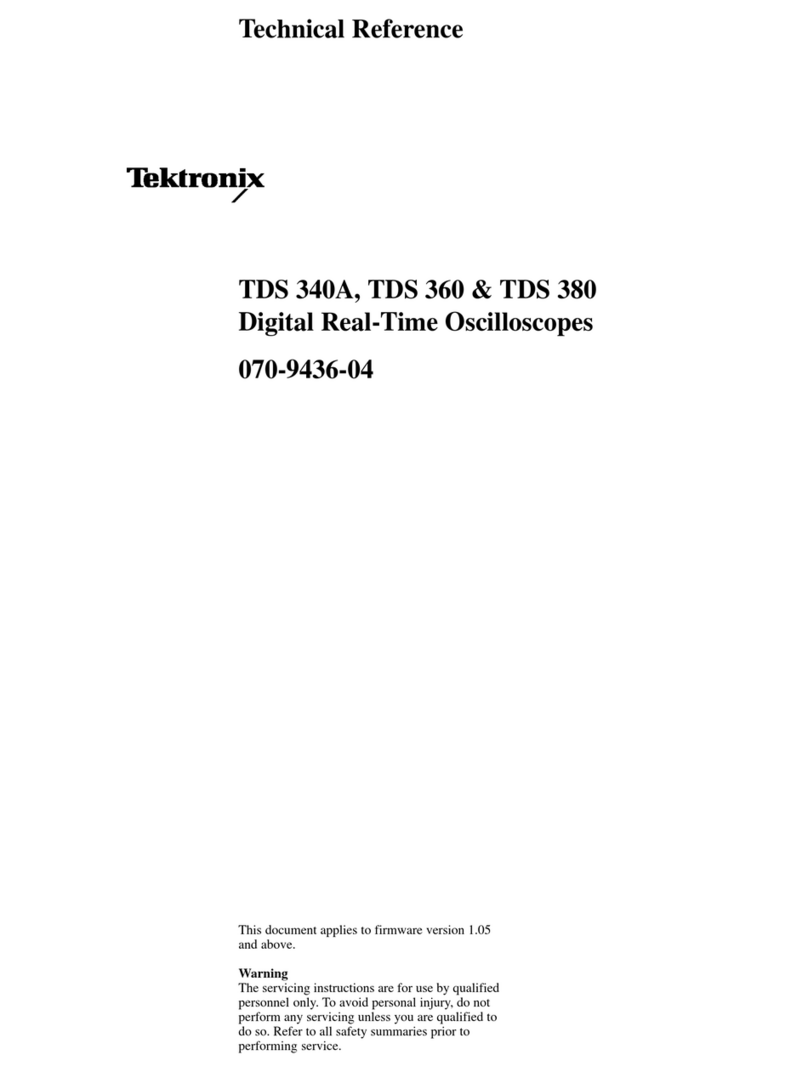
Characteristics-
Type
555/21A/22A
HORIZONTAL
DEFLECTION
SYSTEM
Sweep
Rates
From
0.1 microsecond to 5 seconds
per
centimeter
in
24
calibrated steps.
An
uncalibrated control provides variable
control of sweep rates between the calibrated steps,
and
ex-
tends slow sweep
range
to
about
12 seconds per centimeter.
Accuracy of calibrated sweep rates
is
within 3% (typically
1
%1
with magnifier off.
Magnifiers
Provide horizontal
5X
magnification
of
the center 2-centi-
meter portion of the unmagnified crt display when the inter-
nal time
base
generators provide the horizontal deflection.
Extend the fastest sweep rate of either beam to 0.
02
micro-
second
per
centimeter. Sweep rates
ore
accurate to within
5% with magnifiers on.
External Horizontal Inputs
Rear-panel connectors permit application of external hori-
zontal signals.
Deflection Foetor-Continuously variable from
approxi
-
mately 0.2 volts per centimeter to approximately 20 volts
per centimeter.
Passband-De
to approximately 350
kc
(3
db
down)
at
maximum gain.
Input Impedance -Approximately 1 megohm resistance
with
47
pf parallel capacitance with the
HORIZ
.
DISPlAY
switch set
at
EXT
. A
TTEN
.
X1.
Sweep
Modes
Type
21
A
in
Time Base A compartment-Normal, auto-
matic baseline,
and
single sweep.
Type 22A
in
Time Bose B compartment-Normal,
auto
-
matic baseline, single sweep, sweeps once for each 'A' de-
layed trigger,
and
triggerable once for each 'A'
delayed
tr
igger.
Automatic baseline mode operates only on signals with
repetition rates
above
20
cps. Below
20
cps one of the
other sweep modes must be used.
Triggering Signal Sources
Upper beam or lower beam vertical amplifiers, external
signals or power line signals; upper beam or lower beam
plug-in units when using multi-trace vertical plug-
in
un
its with
single-channel trigger pickoff.
Trigger Slope
and
Coupling
Positive
(+)
or negative (- ) slope, oc-or de-coupled.
1-2
Triggering
Signal
Requirements
15/N
11000-upl
Internal-Signals producing a
mm1mum
of 0.2 centimeter
of vertical deflection (
+
AC
only) up to 1
kc,
or
2 centi-
meters of deflection (+
AC)
up to 30
me.
External-Signals with minimum
of
0.5 volt
peak
to
peak
(+
AC
and
+
DC)
up to 1
kc,
or
0.6
volt(
+
AC
only) up
to 30
me
.
(The
triggering lEVEl control has
range
of + 10 volts
and
the
VERNIER
control has a
range
of
+ 1 volt, making the
overall
range
+ 10.1 volts. The instrument
will
trigger on
signals larger than + 10.1 volts, but the lEVEl
and
VERNIER
control
will
not
be
completely effective
in
determining the
triggering level.)
15/N
7000-109991
Internal-Signals producing a minimum
of
0.2 centimeters
of
vertical deflection, up
to
5 me,
or
1 centimeter
of
deflec-
tion up to 30
me.
External-Signals
with minimum
of
0.2 volts peak-to-peak
up
to
10
me,
or
0.5 volts up
to
30
me.
(The
instrument will trigger on signals
greater
than 10
volts, but the lEVEl control
is
effective
over
a
range
of
+ 10
volts. The
VERNIER
control
operates
over a + 1-volt
range
.)
Delayed
Sweep
Sweep
Delay-0
.1 microsecond
to
50 seconds, continuous-
ly
variable.
Incremental
Accuracy-Within
0.2%, between
the
1.00
and
10.00 positions of the
DElAYED
TRIGGER
control, on
any
single setting
of
the TIME/CM switch.
Overall Accuracy-Within
3%
of
the indicated value.
Time Jitter-less
than
1
part
in
20,000.
CATHODE
RAY
TUBE
(crt)
Type
T5550-2-1 (internal graticule).*
Phosphor
Type
P2
normally supplied; types
P1,
P7
and
P11
optional;
other types
available
on special
order
.
Accelerating Potential
10,000 volts.
Useable
Viewing
Area
6 by 10 centimeters. The 6-centimeter vertical dimension
consists of 4 centimeters for
each
beam
with 2 centimeters
common to both beams.
Trace
Alignment
Traces
are
parallel to
each
other
within 0.1 major division
per 10 major horizontal divisions, when the traces
are
cen-
tered vertically
and
there
is
no input signal.
•Crt
type
is
T5550-2
(external
graticule)
for instruments with
SIN
's
7000
-
8999
.
@
